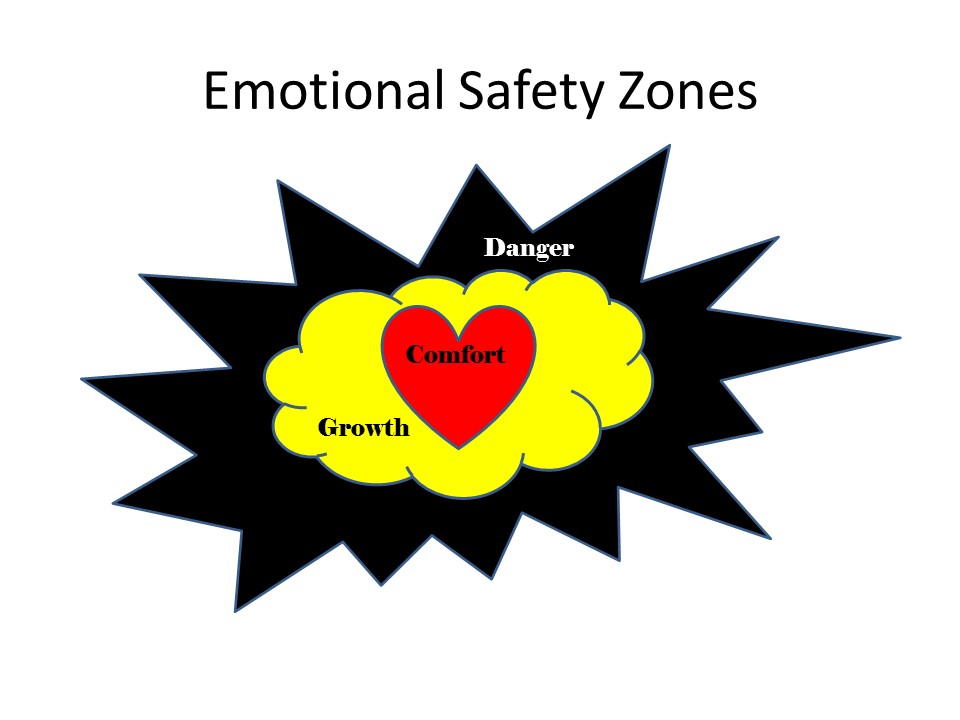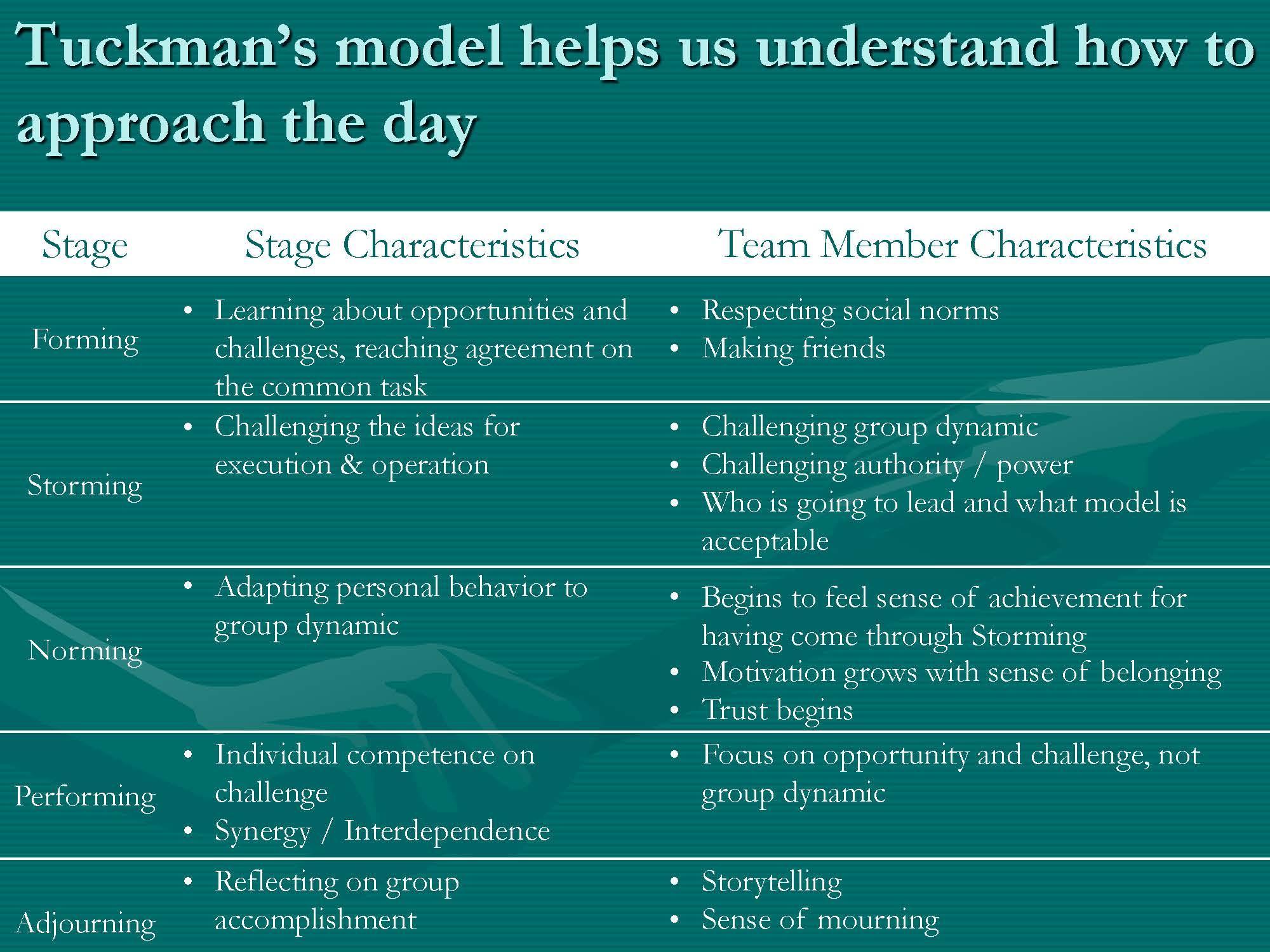Main Body
3. Team Building
What are team-building activities, and what are some important team-building objectives?
Team-building activities are exercises that help teams by:
- Building cohesion and work through common group issues
- Serving as educational tools for a variety of individuals, groups, and organizations
- Providing opportunities for participants to combine individual talents and abilities with an awareness of the need to develop cooperation and trust within the group
- Providing participants with opportunities for self-exploration and growth: as individuals push themselves beyond their comfort zones, they are able to grow and learn about themselves
- Encouraging “Challenge by Choice“
- Because everyone has a different level of comfort regarding emotional and physical challenges, each person is encouraged throughout the program to set their own challenge goals.
- At the beginning of a program, an emphasis on “Challenge by Choice” helps to ensure that while individuals are pushing their levels of comfort, they are also being safely challenged.
- Allows for reflection and relation of experience to daily life at the end of the program
- At the end of each activity, the reflection transforms the one-time experience of teambuilding into a method of bringing about long-term, positive changes
Team-building Objectives
- Increase each participant’s sense of confidence and create a feeling of accomplishment.
- Increase participants’ understanding of themselves and one another.
- Develop the initiative and responsibilities necessary to accomplish a task through group planning and teamwork, brainstorming, and problem solving.
- Help facilitate group growth, ease a group through a difficult period or process, and develop cohesiveness among group members.
- Develop respect and acceptance for the abilities and limitations of each individual.
- Use effective communication skills in group interactions.
- Develop the skills necessary for group interaction.
- Develop leadership skills.
- Clarify the way participants behave in various situations and what effects these behaviors have on the group.
What is the Full Value Contract (FVC)?
The FVC is the process in which a group agrees to find positive value in the efforts of its members. This positive value is expressed in encouragement, goal setting, group discussion, confrontation with a positive intent, a spirit of forgiveness, and taking ownership for behavior and outcomes individually and as a group. In other words, as individuals succeed, the group succeeds. The FVC is the foundation of encouraging the success of any group, whether it is in education, business, or recreation. A FVC is a set of values, norms, ground rules, or rules of conduct for the day that it is established or that the group establishes and agrees to use for their time together at the challenge course. It is a personal and interpersonal agreement built on valuing each person in addition to the group. The FVC allows each member of the group to have an equal voice. This will empower participants and help the group work toward their common goal. It ensures a group’s success in attaining goals, regardless of setting or objectives.
What is a Full Value Contract good for?
Full value contracts are useful for bringing together both groups that have difficulty working together and those that already have great working relations. Regardless of the demographics of the group, it helps all group members to feel a sense of ownership in the process of solving any challenge.
How are they used?
- It should be established at the beginning of a challenge in order to provide clear expectations and regulations for all those involved.
- It then serves as a reference as the group attains its goals.
- It is used to help the Challenge Course Facilitator to recognize struggles within the group and to guide changes in sequencing of activities.
5-Finger FVC
- Pointing Finger – take responsibility for personal actions and don’t blame others
- Middle Finger – no put downs
- Thumbs up – celebrate our efforts
- Pinky Finger – Physical and emotional safety (*see below)
- Ring Finger – Participation & Commitment
Physical Safety
At all times, there will be an emphasis on the importance of physical safety for the group. Part of introducing each activity should include safety guidelines for participants. This includes spotting all participants as they move on any elements. It may also involve clarifying the rules regarding jumping, throwing, and so on. Group members are to use behaviors that are safe for themselves and for the group, and to speak up if they are not comfortable with something, or if another person is doing something (or is about to do something) that is dangerous.
Emotional Safety
Although stress is fundamental to adventure activities, Challenge Course Facilitators use strategies that encourage and provide support to participants without pressuring them. Group support encourages a participant’s willingness to challenge himself/herself, to take risks, and to realize personally that “success” is an individual reward that is celebrated by the group whether or not the event is “executed” fully or well. “Challenge by Choice” should be emphasized because everyone has a different level of comfort regarding emotional and physical challenges. Each participant is encouraged throughout the program to set their own challenges and goals. Goal setting helps to ensure that while individuals push themselves beyond their Comfort Zone, they are safely being challenged in their Growth Zone avoiding the Panic Zone.

I was previously introduced to “Challenge by Choice,” but what does that really mean?
Challenge by Choice is a philosophy on how to encourage participants to achieve their goals & provide them with a safe environment where they can go beyond their comfort level:
- It is not our place to push participants further than they are ready for or capable of.
- It’s great however, to offer helpful advice and encouragement that the participant may need in order to step outside of their comfort zone.
What is the difference between helping a participant and pushing them too far?
Participant on Pamper Pole only wants to go half way up. Fellow participants are shouting at them to go higher.
DO NOT: Join in or encourage the banter in any way or ignore the participant. Also, do not keep telling them that they can go higher and they will be fine. Participants are learning to set their own limits, and they will not thank you for this. They need empathy, support and to be heard.
Challenge by Choice: Reiterate to the participants that we believe in Challenge by Choice and that their friend/co-worker needs encouragement and support. Talk to the participant directly, give them educational praise and tell them that they can go as high as they like. Ask them once again, “how much higher would you like to go?” and let them know that coming down is always an option. With no pressure, they are likely to relax and feel more comfortable making a decision which will push them as far as they are willing to go. That participant may have only gone half-way up, but that may be much higher than s/he intended on originally. They just reached a personal goal.
When does Challenge by Choice NOT Apply?
- Safety Issues – in some circumstances where safety is compromised, it is necessary to not offer choice (E.g. Belay commands).
What is Experiential Learning, and what are the four models?
Experiential Learning may be defined as education that occurs as a result of direct participation in the events of life. It includes learning that comes about through reflection on everyday experiences. Education has created models to describe the learning that goes on in an attempt to understand how the process works and why it is so effective. We will discuss four models below.
1-Stage Model
The 1-stage model (experience) is simply that experience alone is sufficient for learning, and in many cases this is true. This underlying philosophy traces back to the oft-used Confucius quote (from around 450 BC):
Tell me, and I will forget. Show me, and I may remember. Involve me, and I will understand.
The goal of education from this point of view is to structure and organize learning activities in which experiences facilitate learning.
2-Stage Model
The 2-stage model (experience – reflection) is that experiences followed by periods of reflection are an effective way to structure and facilitate experiential education.
3-Stage Model
The 3-stage model (experience – reflection – plan) suggests that following an experience and reflection, it is helpful to develop a plan for future experience.
4-Stage Model
The 4-stage model (experience– reviewing – concluding –planning) can sometimes feel abstract and thus is not particularly student-friendly.
Application
A simple, 3-stage model (do – review – plan) is appealing due to its simplicity. One should use the model to ensure that – while facilitating activities – you give full attention to each stage of the process. In summary, a facilitator’s job is to “chase” the learner around the cycle asking questions, which encourage reflection as a means of testing new ideas. Although the “Do” is often used in the initial stages, rather than “Plan,” the learning cycle is continuous, and thus the starting point can be arbitrary.
The Experiential Learning Cycle is the underlying process of challenge course programs, based on the axiom: “Tell me & I forget, Show me & I remember, Involve me & I understand.”
It involves four steps as follows:
- Experience: An activity or exercise in which the learner actively participates (i.e., Get everyone through the spider web without touching any strands of the web)
- Reflection: Allow opportunity for participants to think about and reflect upon the experience, focusing on what happened, how s/he felt about it, in what ways (if any) the exercise was valuable, etc. (e.g., “At first I didn’t think it could be done, but once we got into it, my doubts left me.”)
- Expansion: After reflection, expanding on the original experience/activity and identifying principles, theories, and other ideas. (e.g., “If at first you don’t succeed, try, try again.”)
- Application: This involves applying lessons learned from the experience to real life situations (e.g., “At work, I am sometimes reluctant to try things that I think might not work.”)
Kolb, D.A. (1984) “Experiential learning: experience as the source of learning and development,” Englewood Cliffs, N.J.: Prentice Hall. 256 pages.
Tips when engaging in Experiential Activities/Exercises:
- Be sure to know what participants want to accomplish/achieve (i.e., ascertain why they are there, are you focusing on their minds, will, or physical abilities?)
- Design lessons and experiences that meet participants’ needs and wants (e.g., “When we leave here today, I want us to be more of a ‘team.'”)
- Identify desired outcomes (e.g., “I want to be more of a risk taker.”)
- Allow time for small and large-group discussion and interaction
- Summarize or allow participants to summarize the lessons learned (collectively and/or individually)
- Celebrate completion of the activities/exercises (i.e., direct participants to give themselves a “pat on the back.”)
What is a Group Life Cycle?


